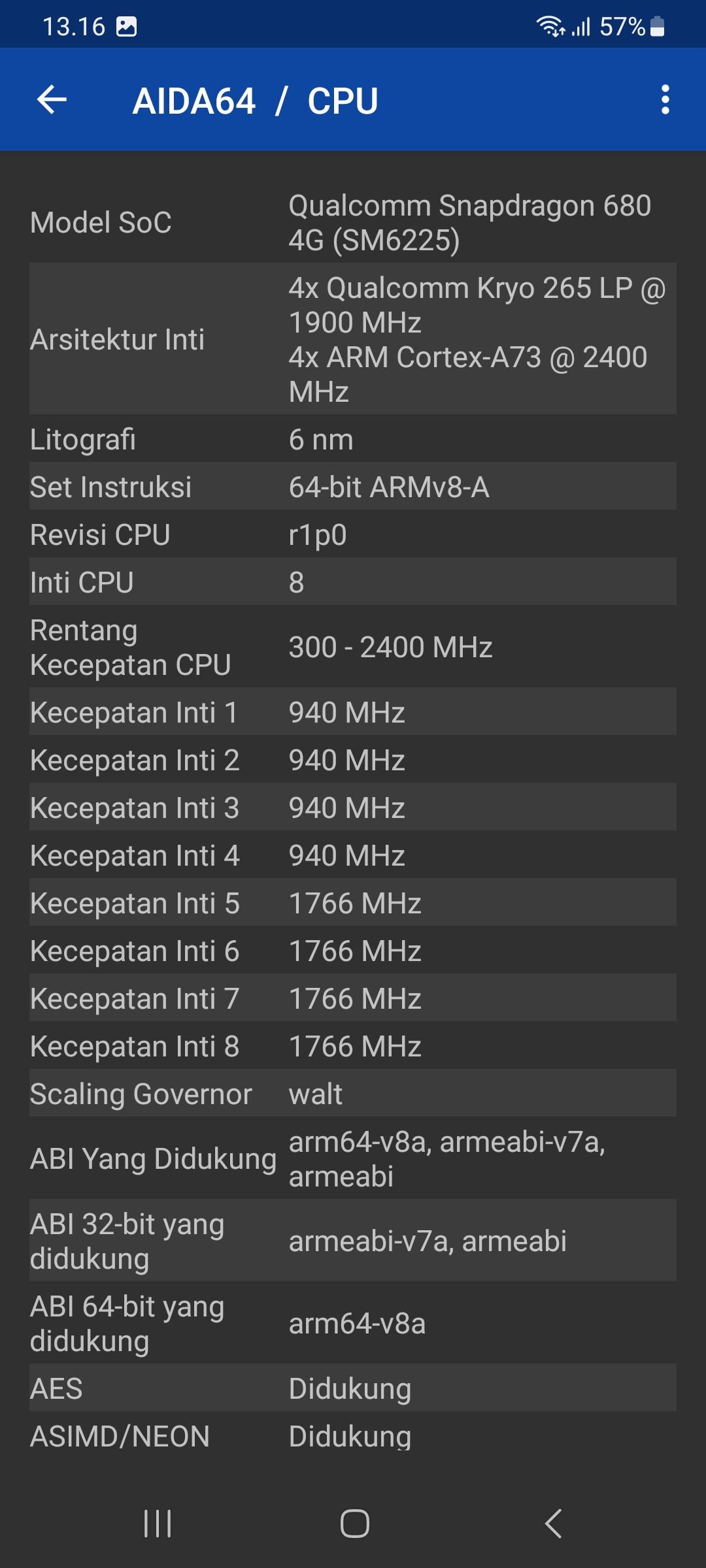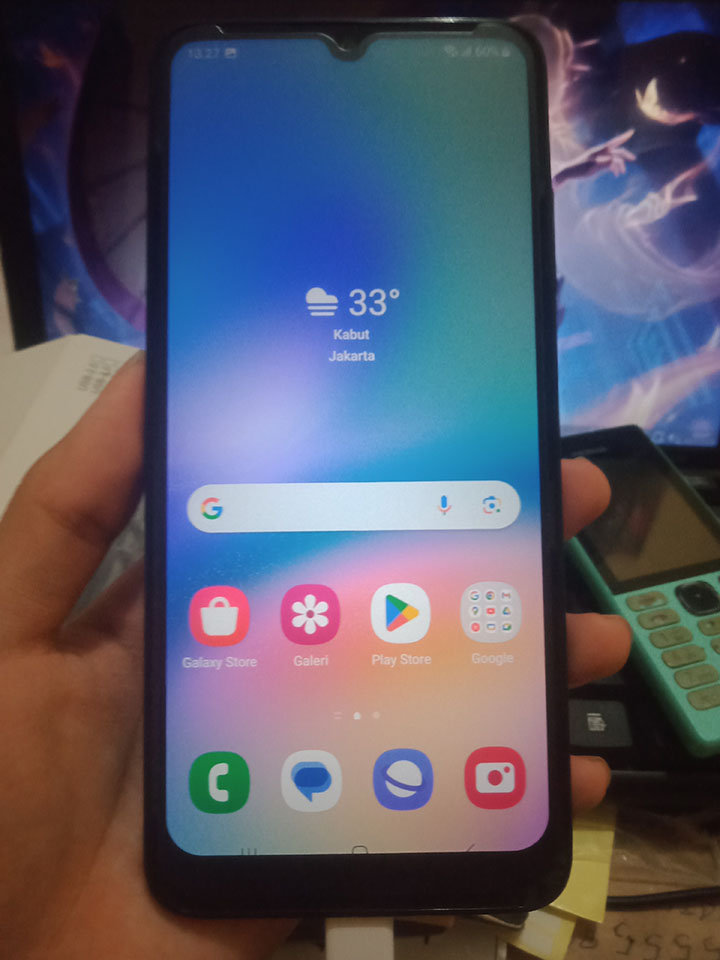Comparing: Intel Core i7 7700K vs Qualcomm SM6225 Snapdragon 680 4G
In this comparison, we analyze two Processors: Intel Core i7 7700K and Qualcomm SM6225 Snapdragon 680 4G, using synthetic benchmark tests to evaluate their overall performance. This side-by-side comparison helps users understand which hardware delivers better value, speed, and efficiency based on standardized testing. Whether you're building a new system or upgrading an existing one, this benchmark-driven evaluation offers valuable insights to guide your decision.

Qualcomm SM6225 Snapdragon 680 4G
| Type: | Processors |
|---|---|
| Brand: | Qualcomm |
| Model: | Snapdragon 680 4G |
Specification Comparison Table
This specification comparison presents technical details of several devices or components to help you understand the key differences between each option. Use this table as a reference to determine which device best suits your needs.
| Specification | Intel Core i7 7700K | Qualcomm SM6225 Snapdragon 680 4G |
|---|---|---|
| Architecture | x86 | ARM |
| Technology | 14 nm | 6 nm |
| Clock | 4.2 GHz - 4.5 GHz | 1.8 GHz - 2.4 GHz |
| Core/Thread | 4 / 8 | 8 / 8 |
| Segmen | Desktop | Mobile |
Submission Comparison Table
This submission comparison table displays the number and details of benchmark data submissions from various devices or components. This information helps you understand the performance based on the benchmarks that have been tested, as well as providing an overview of the consistency and popularity of the available benchmark results.
Submission Comparison Chart
This chart visualizes the benchmark scores comparison between two hardware devices based on submitted data.
Media Gallery
A collection of photos of tested hardware. These images can help you identify the physical form, model, and variant of the hardware in question. These photos are from our own documentation, and if they are not available we may not be able to document them.
About Hardware Intel Core i7 7700K
The Intel Core i7-7700K, launched in early 2017, is a high-performance desktop processor from the 7th generation Kaby Lake family. Built on the 14nm process, the i7-7700K features 4 physical cores and 8 threads, thanks to Hyper-Threading Technology, and is targeted at enthusiasts, gamers, and power users. It operates at a base frequency of 4.2 GHz and can boost up to 4.5 GHz via Intel Turbo Boost, delivering excellent single-threaded performance one of the highest at the time of its release.
As part of Intel’s “K” series, the Core i7-7700K has an unlocked multiplier, making it ideal for overclocking on compatible Z-series motherboards. However, with a TDP of 91W, the processor demands an effective cooling solution, especially when overclocked beyond its stock speeds. Users typically pair this CPU with aftermarket air or liquid coolers to ensure thermal stability under heavy workloads or gaming sessions.
The processor includes Intel HD Graphics 630, which supports 4K output at 60Hz and is sufficient for basic tasks like web browsing, video playback, and office work. However, for serious gaming or GPU-accelerated workloads, a discrete graphics card is still necessary, especially when paired with a high-refresh-rate monitor or demanding software.
In terms of real-world performance, the i7-7700K remains capable even today for 1080p and 1440p gaming, general productivity, and creative tasks. It delivers solid frame rates in many modern titles when used with a modern GPU, and it handles applications like Adobe Photoshop, Premiere Pro, and coding environments reasonably well. However, due to its limited core count by today’s standards and lack of PCIe 4.0 support, it has started to show its age in multi-threaded and next-gen workloads.
Despite being surpassed by newer Intel and AMD CPUs with more cores and better efficiency, the i7-7700K still holds value in many mid-range desktop setups, especially for users who already own an LGA 1151 system and want to maximize performance without a full platform upgrade.
Thursday, 23 June 2022 07:42:37 | Update: 1 month ago
About Hardware Qualcomm SM6225 Snapdragon 680 4G
Qualcomm SM6225 Snapdragon 680 4G is a mid-range processor designed to deliver efficient performance with low power consumption. Built using a 6nm fabrication process, this chipset is able to provide an ideal blend of speed, power efficiency, and stability, which is perfect for smartphones and tablets in the entry-level to mid-range class.
Snapdragon 680 carries an octa-core CPU configuration, consisting of 4x Kryo 265 Gold (Cortex-A73 based) and 4x Kryo 265 Silver (Cortex-A53 based), providing a smooth multitasking experience and good enough performance for light to medium gaming. In terms of graphics, the chipset is powered by the Adreno 610 GPU, which is capable of handling multimedia needs such as high-resolution videos and casual games quite well.
In terms of connectivity, the Snapdragon 680 supports 4G LTE networks and includes Qualcomm AI Engine, which helps improve camera processing, voice recognition, as well as power management efficiency. Not to forget, the presence of Qualcomm Spectra 346 Triple ISP enables better image processing, including camera performance in low-light conditions and multi-camera configurations.
The test was conducted using a Samsung Galaxy A05s device, powered by Snapdragon 680, with a configuration of 6GB RAM, 128GB UFS storage, and Android 13 operating system with One UI 5.1. The test was conducted under new device conditions, using default settings, and an ambient room temperature of 30°C based on the DHT11 sensor.
The results of CPU performance testing on the Snapdragon 680 chipset show quite good numbers in the mid-range. Through AnTuTu Benchmark version 10, the CPU score obtained reached 105,662 points, while in the previous version, AnTuTu Benchmark v9, the score was recorded at 82,391 points. Testing with Geekbench 6 also gave a balanced performance picture, with 415 points for single-core and 1,424 points for multi-core. These scores show that the Snapdragon 680 is capable of providing a smooth usage experience for everyday needs such as multitasking, browsing, and running popular apps efficiently.
These results show that the Snapdragon 680 is a solid choice for users who want stable and efficient performance on a mid-range Android device, whether for daily use, content consumption, or light gaming.
Device Test:
Device: Samsung A05s
Specs: Snapdragon 680, 6GB RAM, 128GB UFS, Android 13
Room Temperature: 30 celcius based on DHT11 Sensors
* Testing was carried out when the device was in new condition, with the latest operating system update, One UI 5.1, default settings
Thursday, 11 January 2024 23:04:13 | Update: 1 month ago


